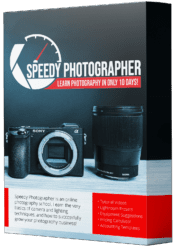Learn FAST: Digital Photography Basics | Part #1 | Exposure
An update to my previous video on digital photography basics. No fluff – straight to the point.
Learn about camera mechanics, shutter speed, aperture, ISO, exposure, histograms, and more!
To join Speedy Photographer or watch my FREE training:
https://www.speedyphotographer.com
Follow me on Instagram:
https://www.instagram.com/kevinraposo
https://www.instagram.com/speedyphotographer
Shortened Transcript
Let’s start by understanding how digital cameras actually work. There are two popular types of digital photo cameras: DSLRs and mirrorless.
With a DSLR, light passes through the lens and directly onto a reflex mirror. This reflex mirror bounces the light up through something known as a pentaprism and then into the viewfinder, allowing the photographer to observe their subject before taking a picture. When the photographer takes a picture, the reflex mirror flips up to reveal the digital sensor, which records the image.
A mirrorless camera is similar, except without the mirror. Light passes through the lens directly onto the shutter and digital sensor. The viewfinder is an electronic, digital representation of the image as it directly hits the camera sensor.
Shutter speed measures how long the camera sensor is exposed to light. In other words, this is how long your camera spends taking a picture.
Shutter speed effects exposure and motion blur. Exposure refers to the amount of light hitting your camera sensor, while motion blur refers to the streaking that can occur when objects in your scene are moving quickly.
A fast shutter speed, such as 1/1000th of a second, can freeze a moving subject, but it also reduces exposure because the sensor is only exposed to light for a short period of time. This means your subject will be sharper, but your image will be darker. A low shutter speed, such as 1/4th of a second, will be used to introduce motion into a picture, but it increases exposure because the sensor is exposed to light for a longer period of time. This means a moving subject will not be as sharp, but your image will be brighter.
Aperture measures the amount of light passing through a set of blades inside the lens. Very simply put, these blades can be controlled by the photographer to let more or less light through.
Aperture effects exposure and depth of field, and it is measured using a number referred to as the f-stop. Depth of field refers to the distance between the closest and furthest objects in your photo that are considered sharp and in-focus.
A small aperture, such as f/14, will decrease exposure and create a deep depth of field where the subject and background are equally visible. A large aperture, such as f/2.8, will increase exposure while also creating a shallow depth of field where the subject is isolated from the background. The visual quality of these out of focus backgrounds are often referred to as bokeh.
ISO measures the sensitivity of the camera sensor to the light being passed through the lens and the shutter.
ISO effects exposure and image noise. Image noise refers to the random grain that can be seen in some images. A high ISO, such as ISO 6400, will increase exposure, but also increase image noise. A low ISO, such as ISO 200, will decrease exposure while also increase image noise.
Exposure is often measured using ‘stops’. A stop is a doubling or halving of the amount of light when taking a photo.
An example of this: changing the shutter speed from 1/500 to 1/250 would be decreasing your exposure by one stop. Increasing your ISO from ISO 200 to ISO 400 would be increasing your exposure by one stop.
Histograms are divided into five segments: blacks, shadows, midtones, highlights, and whites.



Leave a Reply
Want to join the discussion?Feel free to contribute!